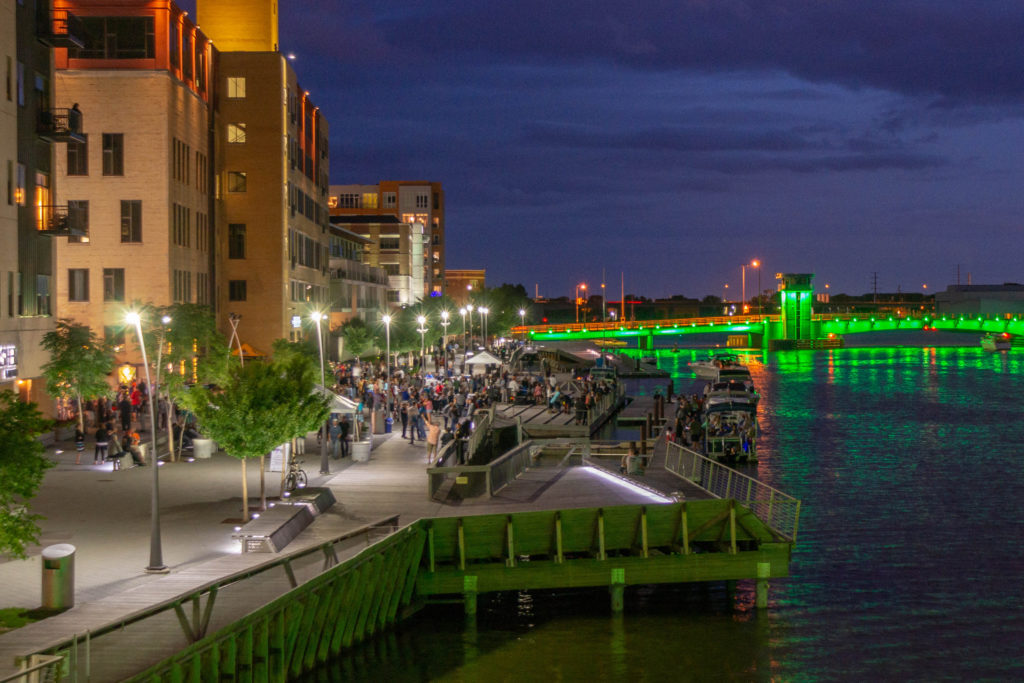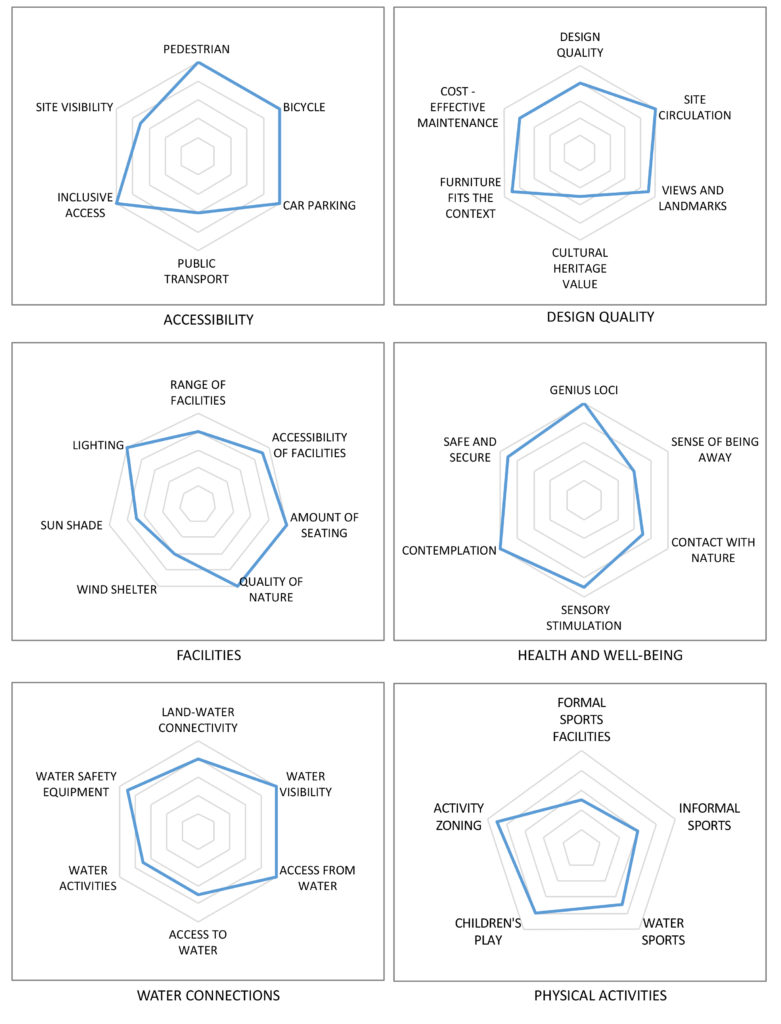
Architect
Chris Reed, Stoss Landscape Urbanism, Boston Massachusetts and Ed Weisner,
Type of Area
Medium sized river with artificial banks
Land/water interaction
Promenade
Harbour
Built Environment Types
Completely built
Scale of Impact
Block
District/ neighbourhood
City
Intervention Scale (Spatial)
Moderate site
Project Types
Urban waterfront development
Outdoor Recreation
Public space regeneration
Urban/ Rural
Inner urban area
Visibility and Openness
Fully enclosed
Fully contained view
A Focus for Civic Life.
This project was completed in 2012 to the designs of Chris Reed, Stoss Landscape Urbanism, and Ed Weisner, for the City of Greenbay, Wisconsin, USA. The project transformed a brownfield site on the city centre riverfront into a focus of civic life. This included the restoration of an old harbour site. The surrounding area had, in common with many places, turned its back on the river.
Before the project, neighbouring areas consisted of many empty spaces often used for car parking and frequently only used during business hours. The elevated walk running along the existing river retaining walls prevented direct access to or from the river. The contaminated site presented various challenges as it had a high groundwater table and in winter ice floated down the river.
The design includes a number of different elements organised spatially along the site. These take into account the different heights of the embankment wall and unified them using a folded wooden surface which also created spaces for dramatic views at the northern end. Other elements include an open space for vendors and festivals and an informal outdoor theatre. A play fountain marks the southern end. The CityDeck has many events programmed there such as “Fridays on the Fox” during the summer and “Dine on the Deck” Wednesday lunches.
The project has been a catalyst for the further construction of residential and retail units, a bank headquarters and has much mixed use development nearby which has brought this part of the city back to life.
The design of the main deck starts as a simple boardwalk following the edge of the city and river which later changes its form by undulating to meet different spatial requirements. The benches incorporated into the deck are designed to take into consideration the scale of the human body; folds in the deck structure create a range of different seats, benches, and chaises longue permitting a choice and flexibility for users. This varied seating was arranged in different configurations: some were placed in close proximity to the water’s edge, some further way which commanded a view of the river; some being close to the water, others further back but overlooking it; some were grouped together providing points for socialisation and some in rows or on their own for opportunities more suited to quiet reflection. Lower-level decks and jetties connected by ramps allow access to and from boats.
Perception and Meaning
Place identity
Imageability
Legibility
Health and Wellbeing
Place affordance
Increases socialisation
Increased physical activities
Interaction with Water
Visual

Website of the project:
https://www.stoss.net/projects/resiliency-waterfronts/citydeck
Google map reference
The project scores presented shows a generally highly accessible location – though not so well-served by public transport. The design quality is high apart from inclusion of cultural heritage values in the project. The number of facilities is very good apart from the site being exposed to sun and wind.
The health and well-being scores well apart from the sense of being away and contact with nature. Water access is good and general water connections through the activities on the water apart from boating are limited, nor are there any formal sports activities and limited informal sports, due to its location and primary function.
